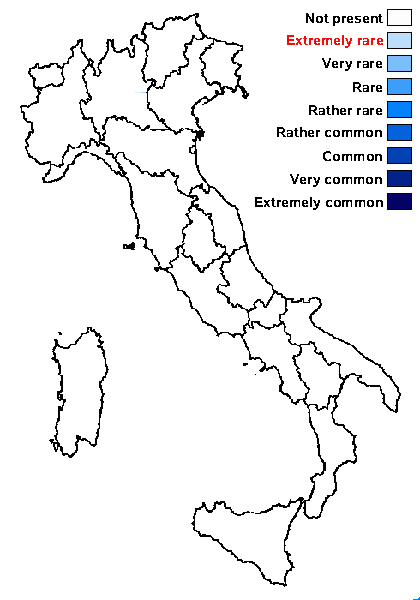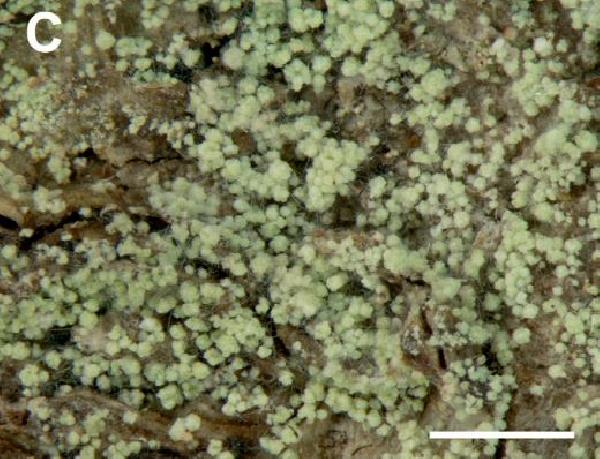Chrysothrix fagicola Malíček & Vondrák
in Vondrák & al., Preslia, 95: 336, 2023
Synonyms:
Distribution:
Description: Thallus crustose, endosubstratic or hemiendosubstratic, formed by a hypothallus and visible as a pale film, covered in relatively sparse soredia, or groups of soredia, sometimes these crowded in patches but not forming a continuous crust; prothallus and soralia absent. Soredia yellow-white to white-grey, usually with a yellow or bluish tinge, finely granular, 25-50 μm in diam., often gathered into up to 80 μm wide consoredia; soredial wall more or less compact, hyaline, without projecting hyphae. Needle-like crystals of zeorin often cover the thallus after several years of storage in the herbarium. Apothecia and pycnidia unknown. Photobiont chlorococcoid, the cells globose 5-15 μm wide. Spot tests: K+ faintly yellowish, C-, KC+ faintly yellow, P-, UV-. Chemistry: usnic acid and zeorin, the latter sometimes in traces only.Note: a recently-described species, so far only known from the Czech Republic on the smooth bark of Fagus. Being known in the sterile state only, it could have been largely overlooked or confused with other similar lichens, and is likely to be more widespread (see Vondrák & al. 2023, Gheza & al. 2025). To be looked for in Italy.
Growth form: Crustose
Substrata: bark
Photobiont: green algae other than Trentepohlia
Reproductive strategy: mainly asexual, by soredia, or soredia-like structures (e.g. blastidia)
Pioneer species

Predictive model
Growth form: Crustose
Substrata: bark
Photobiont: green algae other than Trentepohlia
Reproductive strategy: mainly asexual, by soredia, or soredia-like structures (e.g. blastidia)
Pioneer species

Predictive model


